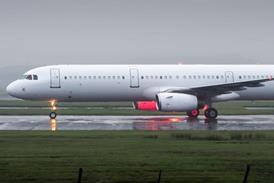ESA probe launched successfully on 162-day journey to analyse and map planet
The European Space Agency’s (ESA) Venus Express probe was launched successfully on 9 November from Russia’s Baikonur cosmodrome aboard a Starsem Soyuz-Fregat launcher.

Built by Alcatel Alenia Space Italy, the 1,270kg (2,790lb) spacecraft will take 162 days to reach Venus. Its first trajectory correction manoeuvre was on 11 November, following a trajectory calibration and activation of its high gain antenna.
“Originally, Venus and the Earth must have been very similar planets,” says Jean Jacques Dordain, ESA director general. “So we really do need to understand why and how they eventually diverged to the point that one became a cradle for life while the other developed into a hostile environment.”
Approaching Venus, the spacecraft’s main engine will reduce its velocity to be captured by the planet’s gravity and enter a highly elliptical polar orbit, with a pericentre altitude of about 250km (155 miles) and an apocentre distance of 220,000km by mid-April.
The probe will analyse the Venusian atmosphere and map the surface for 500 Earth days. Its 104kg payload contains seven instruments including an ultraviolet and visible imager, an infrared spectroscope, and magnetic field detectors. The seven instruments were used on ESA’s Rosetta and Mars Express missions, but Venus Express’s are upgraded versions.
ROB COPPINGER/LONDON
Source: Flight International























